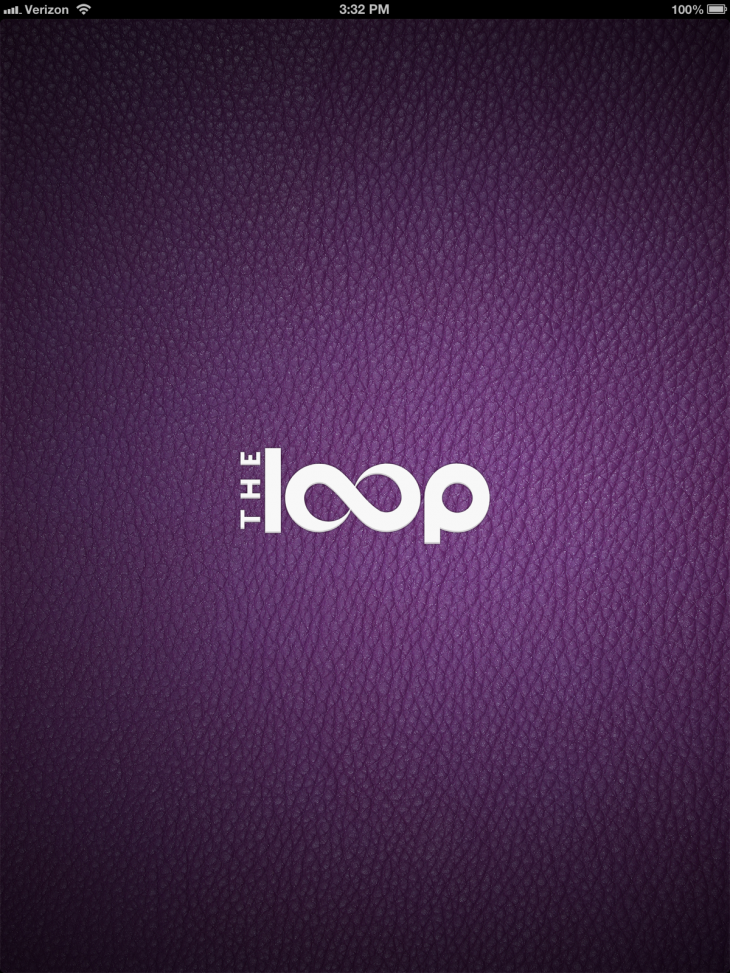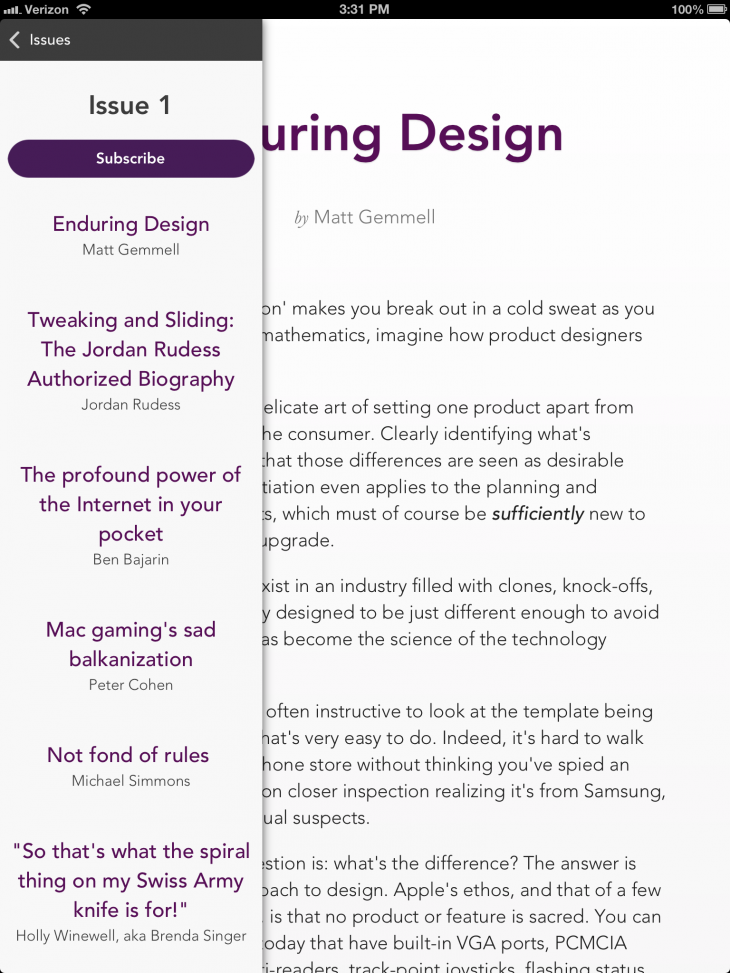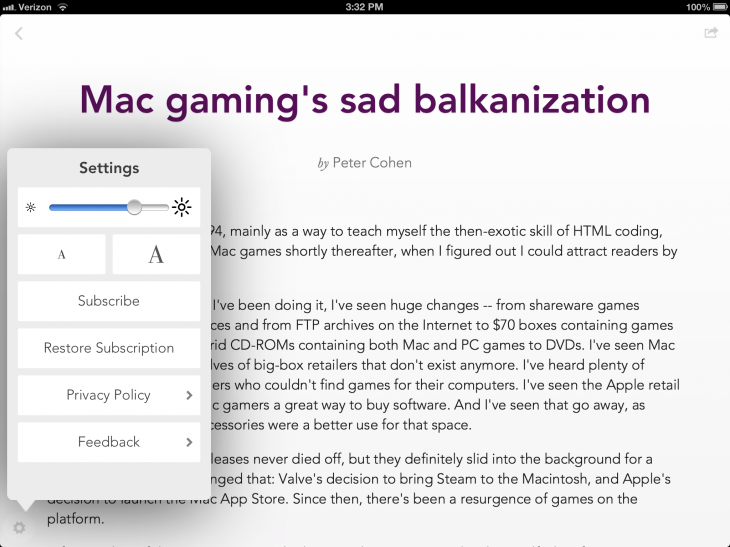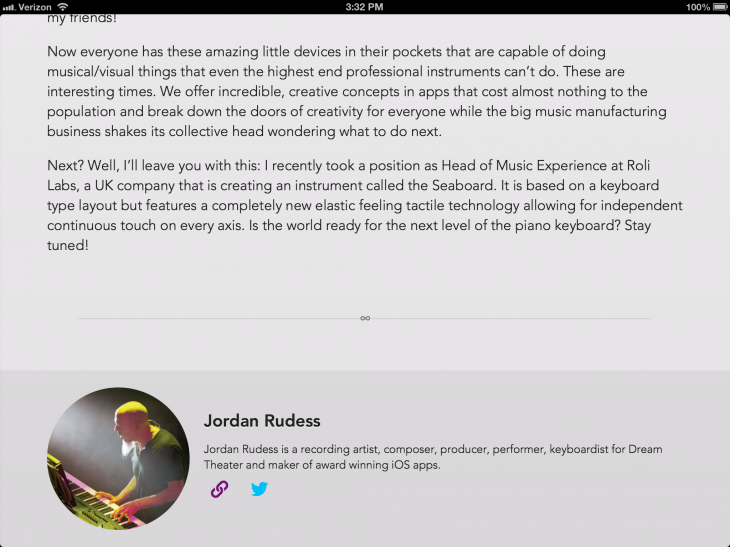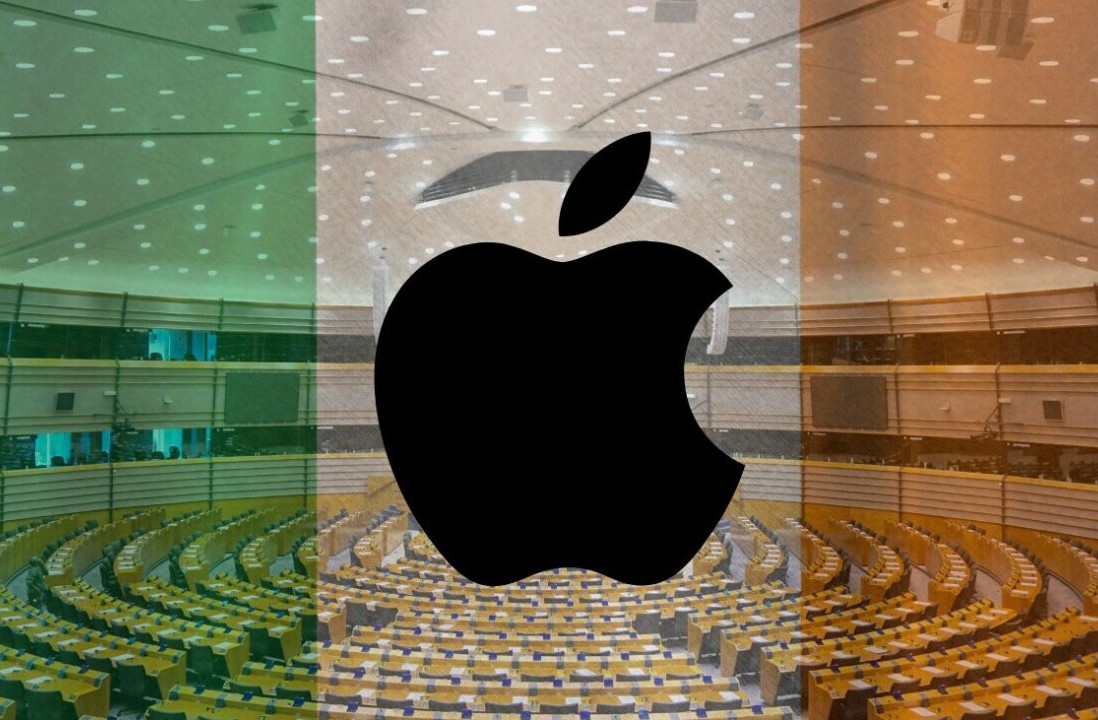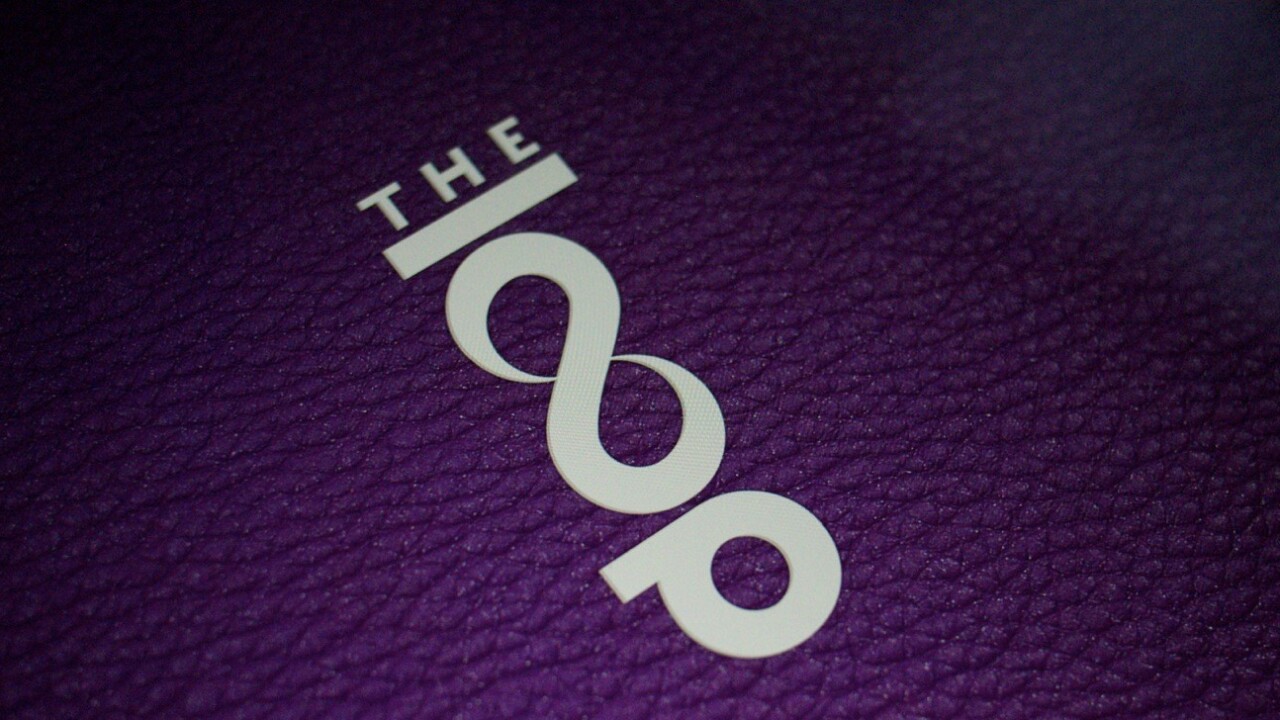
This isn’t the first time that Jim Dalrymple has made a bet on the future of publishing. “In 1994, I started publishing on the web, and that was one of the first big modern-day shifts that we saw,” he says. “The opinion of the big publishers was that the web could never be a decent platform to publish on, but I certainly disagreed. We moved forward with that and it ended up being very successful for us.”
Now, he’s made a bet on another platform in Apple’s Newsstand, where he’s launching The Loop Magazine, a new publication for the iPad.
The Loop Magazine is a periodical, published twice monthly that runs a $1.99 subscription fee on Apple’s Newsstand platform. It’s not available anywhere else and the content in the app is specifically commissioned for the magazine, not repurposed.
It’s also content that reflects the interests of the garrulous, outspoken and editor of its namesake website The Loop. Dalrymple is a 20-year veteran of the online publishing business. He co-founded the original MacCentral, which was eventually sold to Macworld, with fellow Canadian Stan Flack, who passed away in 2008. Instantly recognizable by his semi-sentient companion The Beard, Dalrymple has become a fixture of the Apple editorial community that is well respected for his straightforward prose and famously accurate ‘yep/nope’ posts.
For Dalrymple, making another bet on a publishing platform meant not simply making an app that displayed the content on his website, something that he could have done many times.
“I have resisted every digital platform since we sold the company…” he says. “From 1999 to 2013, there has been a variety of digital publishing platforms that have allowed you to take your website and put it into some kind of magazine, but none of them seemed viable to me.
“Move ahead 20 years from where we were, and here’s Newsstand…I’m convinced that Newsstand is the next big publishing platform, the next big shift. It won’t be the last one, but it’s the next big shift. I’m convinced that it’s where I need to be to publish something like The Loop Magazine.”
Dalrymple says that the reaction to Newsstand by big publishers has been very similar. And when they do act on it, they simply package their already existing magazine and shove it into an app, much like they did with the web before it. The positive aspects of Newsstand for Dalrymple include the fact that it takes care of payments, has an audience with credit card info already primed and ready for purchase and heavily promotes publications in Newsstand via the App Store.
The app is built by the team at TypeEngine, and features a cleanly lined interface with a simple sidebar that holds articles and issues. Dalrymple praised the team there and what they did with the app, which is the very first magazine to be launched using their publishing tool.
Otherwise the text is clearly the focus, and it dominates the view throughout. The first issue’s cover is a nice rock-star purple leather that feels very appropriate for Dalrymple. The selection of authors is right in line with the kinds of things that are linked to on The Loop site. App developer Matt Gemmell, analyst Ben Bajarin, Loop editor Peter Cohen, developer Michael Simmons, Dream Theater keyboardist and developer Jordan Rudess and event planner and wine author Holly Winewell (Brenda Singer) are among the contributors.
The content is top notch, with thoroughly interesting stuff so far that runs the gamut from macro to micro-interest topics. Technology with a splash of music and honesty, much like The Loop.
Inspiration
If the TypeEngine name sounds familiar, it might be because you saw an exchange of sorts between the creators and The Magazine founder Marco Arment a couple of months ago. Jamie Smyth and Daniel Genser, who are responsible for the app that powers The Loop Magazine, posted a letter about how familiar the design of TypeEngine was to The Magazine and noted that Arment’s product was an inspiration.
Arment provided what I felt was a concise bit of concern about the letter. “But I worry that TypeEngine, and startups like them, are focusing too much on the wrong side of this problem and filling a lot of people with false hope or misleading expectations,” Arment says, noting that The Magazine’s success had little to do with the specificities of the app and everything to do with the content. “It’s succeeding because Glenn, the authors, the illustrators, the photographers, and I pour a lot of time and money into the content, relentlessly publishing roughly two original illustrations, four photos, and 10,000 polished words every two weeks. If you want to succeed by copying something from The Magazine, copy that. The app is secondary — it’s just a container.”
Dalrymple agrees. “It’s all about the content,” he says. “It’s not a matter of trying to do something to compete with what Marco has, I think what we have is two very different magazines. I’m sure that there will be some people that are interested in what he does and what I’m doing, which is great.”
I think it’s pretty self evident that Arment blazed a trail with The Magazine that is being followed and expanded on by others, something he seems to be making a habit of after Tumblr and Instapaper. But that trail is just beginning, and it’s encouraging to see new voices follow. As a note of disclosure, I’ve spoken to both Dalrymple and Arment about contributing, but have not yet done so.
Reduction
In cooking, a reduction is the process of boiling down soups, wines or juices in order to thicken and bolster their flavors. The Loop Magazine and The Magazine both feel like a reduction.
The majority of the mass market jumped to the conclusion that iPad publishing was as easy as compressing all of its lumbering, palette deadening morass of ads and high-octane content into Newsstand via digital gavage. Bulky downloads, enormous PDF files and a dearth of lean and light-weight publishing tools has threatened to strangle Newsstand publishing almost before it began.
That doesn’t mean that every publication should or could put out a minimal app like The Loop Magazine. But you have to create for the platform, with your content in mind. That’s the big thing that most publishers are missing out on. The ability to not just convert their existing content for viewing on the iPad, but also to reinvent themselves to best display on the platform.
“The whole idea of this was to make sure that it was exclusive content. I wanted to make sure it was something that people couldn’t find from these writers anywhere else,” says Dalrymple. To that end, articles will be exclusive to The Loop Magazine for 30 days and after that they’re free to do what they wish. One article will be published to a dedicated website a the day the issue goes out and when the next issue is released, the most read articles from the previous issue will be released on the site as well. Over the next few weeks, all articles will go live on the site. For now, Dalrymple is paying writers $500 an article.
For some small teams and sites, an offering like The Loop Magazine makes plenty of sense. It’s a way to transmit a strong editorial voice more effectively and with less infrastructure. For others, there will be new ways to do that.
For authors and editors like Dalrymple, whose main site is comprised primarily of a list of links out to authors and other content, this format seems like a natural extension. Instead of simply linking out to an author, he’s now reaching out to them and asking them to write bespoke content for the magazine.
In the end, the app is just fine, but it’s also the least interesting thing about modern publishing and the beginnings of a groundswell of accomplished editors becoming publishers is the most. It’s not about ‘all magazines should look like this’, it’s about ‘all magazines should care about content over anything else’. Dalrymple seems on board with that idea, as does Arment, and I don’t think they will be the last.
You can download the magazine on Newsstand here.
Get the TNW newsletter
Get the most important tech news in your inbox each week.
